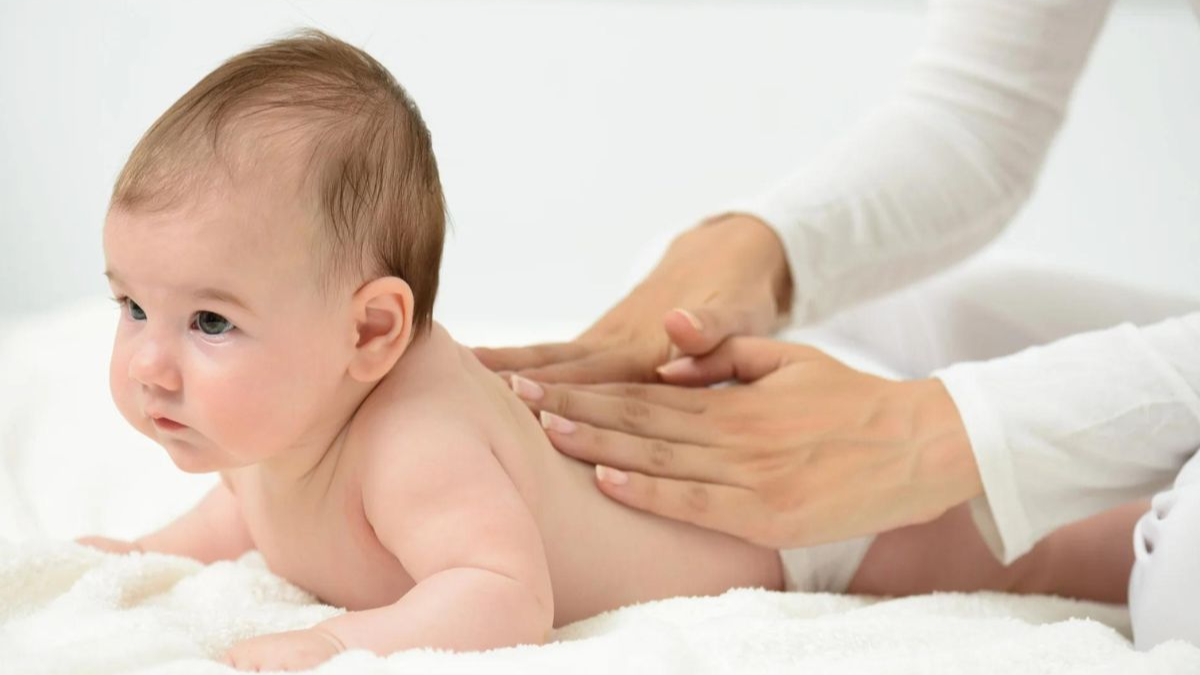
For generations, the practice of massaging infants with various oils has been a cherished tradition in many cultures, particularly in India. Often, ghee (clarified butter) is among the substances chosen, lauded for its perceived nourishing and moisturizing properties. While the loving touch of a parent through massage is undeniably beneficial for infant bonding and development, the choice of lubricant deserves careful consideration. When it comes to ghee, what might seem like a harmless, even beneficial, traditional practice could actually pose some potential drawbacks for your little one's delicate skin and overall health.
Table of Content:-
In an exclsuive interaction with the editorial team of Onlymyhealth, our expert, Dr Bhumesh Tyagi, Consultant, General Medicine and Physician, Shardacare, Health City, Noida, explained why you might want to reconsider reaching for the ghee bottle when it's massage time for your infant. Here is what he shared with us.
The Science Behind Infant Skin
An infant's skin is remarkably different from adult skin. It's thinner, more permeable, and has an underdeveloped barrier function. This means it's more susceptible to:
- Absorption: Substances applied to an infant's skin are absorbed more readily into their bloodstream.
- Irritation: Their skin is more prone to irritation, dryness, and allergic reactions.
- Temperature Regulation: Their immature thermoregulatory system can be easily affected by external factors.
Also Read: Expert Explains Ways Diabetes Can Impact Your Diet

Potential Concerns with Ghee as a Massage Oil
While ghee is a staple in many kitchens and offers nutritional benefits when consumed, its topical application on an infant's sensitive skin can raise several concerns:
Risk of Clogged Pores and Rashes: Ghee is a heavy, occlusive substance. Its thick consistency can easily clog an infant's tiny pores, leading to:
- Miliaria (Heat Rash): Especially in warmer climates or during summer months, trapped sweat due to clogged pores can result in irritating heat rashes.
- Folliculitis: Inflammation of hair follicles, which can manifest as small red bumps.
- Acne Neonatorum: While often physiological, applying heavy oils can exacerbate or contribute to breakouts.
Difficulty in Washing Off: The greasy nature of ghee makes it challenging to wash off completely, even with a gentle infant cleanser. Residual ghee can:
- Trap Dirt and Impurities: Leading to further skin irritation and potential infections.
- Promote Bacterial Growth: A warm, moist, and oily environment is conducive to bacterial proliferation.
Potential for Allergic Reactions: While generally considered safe for consumption, some infants may have an unrecognized sensitivity or allergy to dairy products. Applying ghee topically could trigger:
- Contact Dermatitis: Red, itchy, inflamed skin where the ghee was applied.
- Exacerbation of Eczema: For infants predisposed to eczema, the heavy nature of ghee can trap allergens and irritants, worsening their condition.

Odor and Hygiene: The distinct smell of ghee, though pleasant to some, can linger on the baby's skin and clothes. Furthermore, if not stored properly, ghee can become rancid, and applying rancid oil can be irritating and unhygienic.
Lack of Specific Benefits for Skin Barrier: While proponents might claim ghee is "nourishing," there's limited scientific evidence to suggest it offers superior benefits for an infant's developing skin barrier compared to oils specifically designed for babies. In fact, its heavy nature might hinder the skin's natural breathing process.
Safer Alternatives for Infant Massage
The good news is that you don't have to forgo the beautiful ritual of infant massage. There are numerous safer and more beneficial alternatives:
- Mineral Oil-Based Baby Oils: These are highly purified, non-comedogenic (won't clog pores), and less likely to cause allergic reactions. They create a protective barrier without suffocating the skin.
- Vegetable Oils Specifically Formulated for Babies:Look for cold-pressed, unscented oils like:
- Sunflower Oil: Rich in linoleic acid, which is beneficial for the skin barrier.
- Safflower Oil: Similar to sunflower oil in its properties.
- Fractionated Coconut Oil: Lighter than virgin coconut oil and less likely to clog pores.
- Petroleum Jelly: While not an oil, it's an excellent occlusive for very dry or compromised skin, creating a strong barrier.
- Unscented Lotions and Creams Designed for Infants: These are often formulated with emollients and humectants to hydrate and protect the skin.
Always perform a patch test before applying any new product to your infant's entire body. Apply a small amount to a discreet area, like behind the ear or on a small patch of the leg, and wait 24 hours for any reaction.
Importance of Consultation
Before incorporating any traditional practice into your infant's care routine, it's crucial to have an open conversation with your pediatrician. They can provide personalized advice based on your baby's individual health, skin type, and any pre-existing conditions.
Bottomline
While the desire to follow traditional practices is understandable and often rooted in love, understanding the nuances of infant physiology allows us to make informed choices that truly prioritize our baby's health and well-being. When it comes to infant massage, opting for lighter, non-comedogenic, and baby-specific oils ensures that the loving touch provides only benefits, without any hidden risks.
Also watch this video
How we keep this article up to date:
We work with experts and keep a close eye on the latest in health and wellness. Whenever there is a new research or helpful information, we update our articles with accurate and useful advice.
Current Version